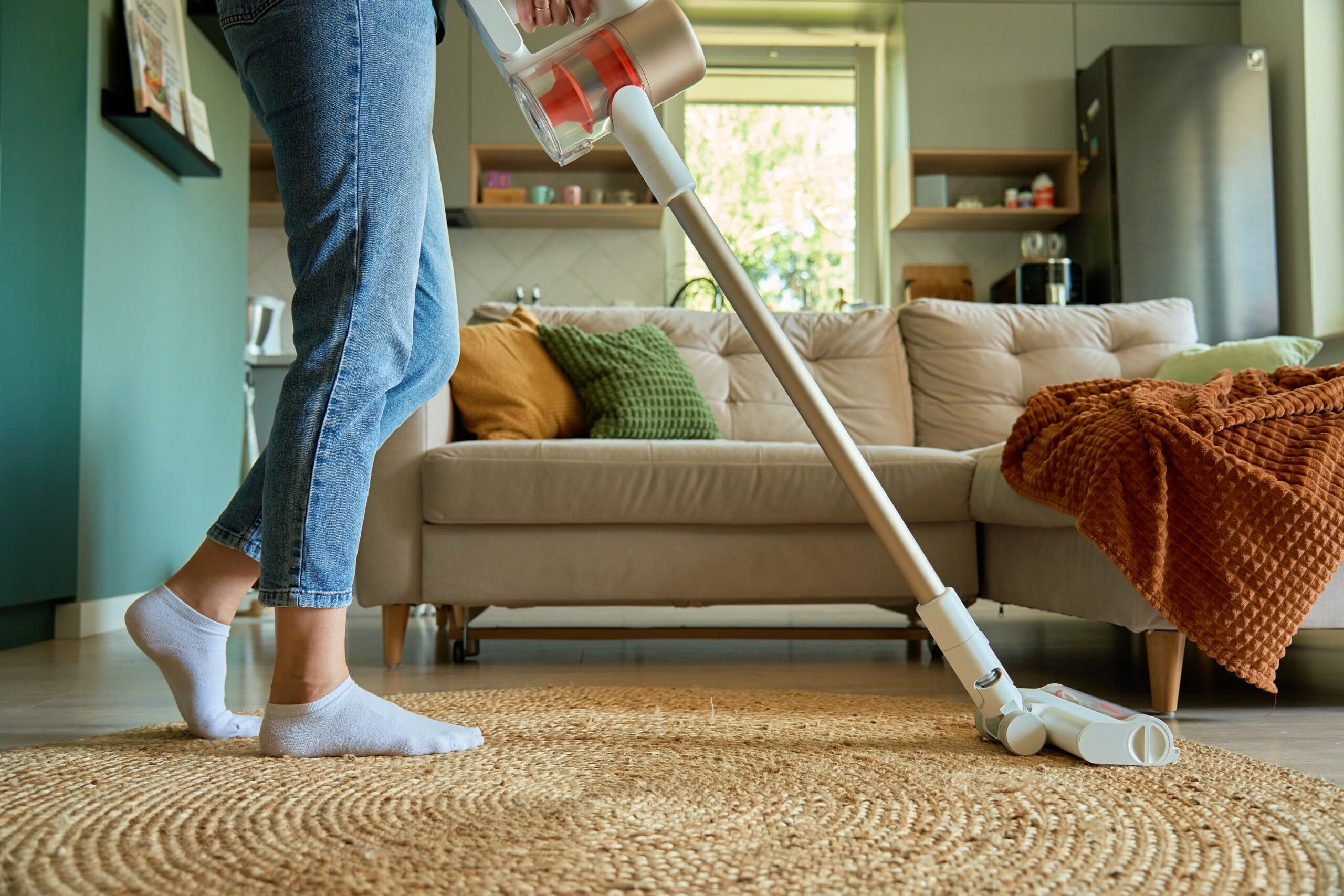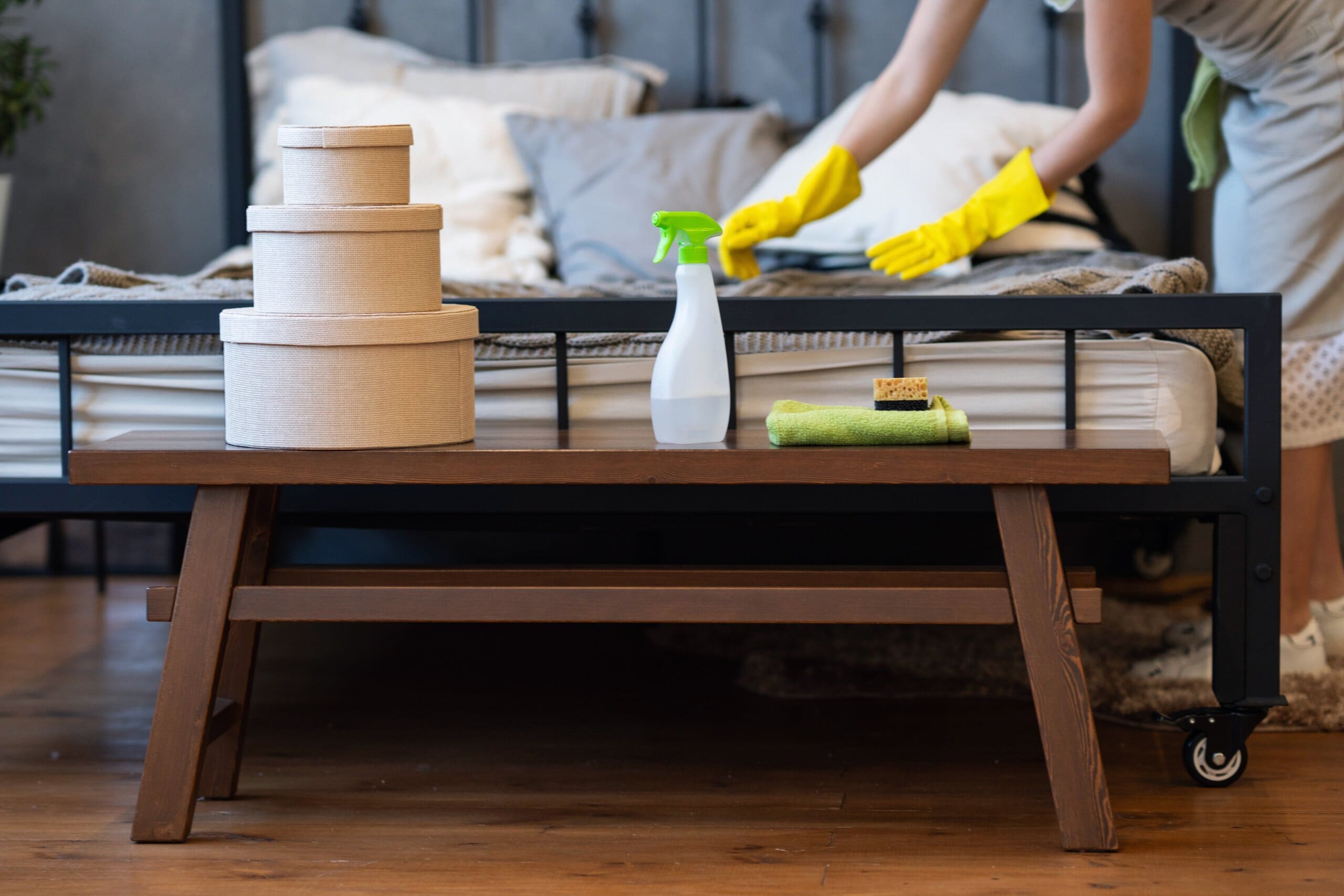Bed bugs are great hitchhikers that can hide in small crevices. Therefore, they can move between homes, hotels, and offices by travelling on clothing, furniture, bedding and luggage.
Although bed bugs typically feed on blood every 5 to 10 days, they are resilient and capable of surviving up to a year without feeding, which can explain why Lady Bug Pest Control has witnessed a 75% rise in bed bug callouts compared to last year.
However, to help, MattressNextDay have enlisted the expertise of Vicki Sims, Managing Director of Lady Bug Pest Control to answer the most common questions about bed bugs on mattresses, as well as preventing them in your home or hotel room.

What do bed bugs look like on a mattress?
Knowing what a bed bug looks like is important for stopping an infestation. Bed bugs are small, oval, brownish insects that feed on human and animal blood. Adult bed bugs have flat bodies, and are a similar size and colour to an apple pip, depending on their age.
Although bed bugs are sometimes mistaken for fleas, what makes them more distinguishable is their colour, flat bodies, and large abdomens. Bed bugs typically bite areas of the body that are exposed whilst sleeping, like the head, arms, and legs. The bites tend to be in clusters and appear as red raised bumps with a dark spot in the middle.
Female bed bugs lay 200-500 eggs over two months in batches of 10 to 50. The eggs are sticky and attach to items of furniture or fittings in clusters. Eggs can also hatch in about a week, so it’s important to deal with them as soon as you find one!
Where are bed bugs more commonly found?
Understanding the behaviour of bed bugs will help figure out where to look for them. You’d obviously imagine finding them in your bed from their name, but their flattened bodies also allow them to conceal themselves in cracks and crevices around your room, such as in floorboards, skirting boards, or within furniture like your sofa.
However, they usually tend to stay close to anywhere you or a pet will be sleeping – which is why over a third (35%) of them are found in the springs of a mattress, 23% are found in the mattress itself, and 13% are found in the bed frame or headboard.
How to check a mattress for bed bugs
Bed bugs tend to come out at night in search of their next feed, and always hide in groups. This makes it difficult to spot them in broad daylight. To spot bed bugs on a mattress, look out for signs that they've been there previously. Here are two key things to check for:
- Tiny dark and reddish stains or the appearance of rust on bed sheets can be a sign of a crushed bed bug
- Eggs or eggshells that are 1mm in size. These can be particularly hard to spot but are usually found in clusters
Can bed bugs live in a mattress?
While they often live on the surface of mattresses, or in dark nooks near your bed, bed bugs in mattresses can be a major concern too. About a quarter of bed bugs are found here, and they usually enter through any holes or tears in the outer layer of your mattress.
You can take action to prevent an infestation in your mattress by regularly checking for any breaches and working to patch them up quickly when found.
Can bed bugs live in a memory foam mattress?
You’ll often hear people saying that bed bugs can’t live in a memory foam mattress, but this is only partially true. Although bed bugs can’t live inside these mattresses, you’re still at risk of an infestation if bugs take hold on the mattress cover or the underside of your bedding.
Memory foam protects against dust mites, but not necessarily against other insects. Therefore, you should still take regular care of your foam mattress and deal with any signs of bed bugs as soon as you possibly can.

10 tips to prevent bed bugs in your home
There are plenty of measures you can take to stop bed bugs living on your mattress before it’s too late. Here are ten easy ways you can protect your room against an infestation:
1. Keep your bed clean
Regularly cleaning your mattress is not only key to making it last longer but it’s also the perfect opportunity to check for bed bugs. You should aim to clean your mattress once every three months. This will also remove mattress stains from bed bugs and any other unwanted dirt.
Pocket sprung styles can be vacuumed safely, whereas foam styles like memory foam require sweeping to avoid damage. For more advice on how to clean a mattress from bed bugs, you can read our guide on preparing and caring for your memory foam mattress to ensure you keep it as hygienic as possible.
2. Let your bed breathe
Once a week, pull back your bedding and air out your mattress. This gives your mattress the chance to spring back into shape, whilst evaporating any excess moisture.
What’s more, bed bugs and dust mites love the warmth of your bed, so letting your mattress air and cool down will stop them from loitering around.
3. Wash your bedding
Bed bug research shows that bed bugs prefer to dwell in dirty items, as opposed to clean ones. Make sure to wash and change your bedding and sheets at least once a week to avoid a build-up of bacteria.
4. Invest in a mattress protector
Use an encasement mattress protector. These can be labelled as bed bug proof, but the primary word to look out for when shopping is ‘encasement’.
This style of mattress protector completely covers the mattress, leaving no entry point for pesky insects. Plus, if you do have bed bugs, an encasement will trap them, meaning they’ll eventually die of starvation.
5. Have a spring clean
Make sure to keep your home clutter-free and tidy. The more stuff you own, the more opportunities for bed bugs to hide. Plus, clutter increases the difficulty in eliminating bed bugs once they’ve been established.

6. Hoover, hoover, hoover!
You should also vacuum at least once a week to remove any potential bed bugs from travelling further. Make sure to hoover all hiding hotspots, such as skirting boards, under sofa cushions, and under the bed.
7. Be wary of communal laundry places
If you share laundry facilities with others, such as in student accommodation, take extra caution. When you transport your items to be washed, keep them in a plastic bag.
Once they are washed, remove them from the dryer and place them straight back in the bag. Fold them at home where it’s safer to do so.
8. Inspect new furnishings
If you purchase second-hand furniture, make sure to inspect the item for bed bug infections first, before taking it home, especially if you are buying a bed frame or mattress. Be wary of rugs and other soft furnishings, as bed bugs can live here too.
9. Don't ignore cardboard
Bed bugs are also known to hide in cardboard, so try to unpack your boxes quickly after moving house. Also, never use cardboard boxes for storage and stick to plastic containers, instead.
10. Crack a window at nighttime
According to the British Pest Control Association (BPCA), the ideal temperature for an adult bed bug to thrive is between 21-32°C, so it’s best to keep your room cool at night time.

Tips to prevent bringing bed bugs back from holiday
One of the most common places to pick up bed bugs is on holiday, as previous sleepers in your hotel room might not have been as vigilant when looking for infestations. Here are our tips and tricks to making sure no bed bugs hitch a ride on your luggage!
Vicki Sims, the Managing Director at Lady Bug Pest Control says,
When people arrive in their hotel room, many place their suitcases straight onto the bed and start unpacking their clothes. However, we would suggest keeping your suitcase off your bed as this is where bed bugs are most commonly found. Depending on the star rating of your hotel, you may have a luggage rack which is where you should ideally store your suitcase. But if you don’t, keep your suitcase as close to the door as you can.
When you’ve been travelling for hours, the first thing you’re likely to want to do once you arrive in your hotel room is to remove your clothes and throw them into a drawer before heading back out. However, it is safer to hang your clothes in a wardrobe than in drawers (especially if they are the drawers of your bed). Although bed bugs can crawl, they can’t fly, so they are less likely to be able to get to your clothes in a wardrobe.
Vicki Sims recommends:
You should also investigate your hotel bed for an infestation of bed bugs. To do this, pull your bedding off the bed so that you can see the bare mattress, and any signs of actual bed bugs, or their faeces. Next, lift the mattress up and look for bed bugs underneath your mattress. Do this as well as in the crevices of the bed drawers if it is a divan bed. Finally, you should investigate your mattress, including behind it, and look in between the gap between the headboard and the wall itself. If it’s too dark, you can also use a torch on your phone to take a closer look. Some common signs of bed bugs include rusty or reddish stains on the sheets or mattresses, dark spots, bed bug eggs or live bed bugs.
Bed bug research shows that bed bugs are more attracted to dirty clothes than to clean clothes. So, when packing for a trip, make sure to take a spare plastic bag for your dirty clothing, and knot it each time you add to it.
When you arrive home from your holiday, unpack your bag in a location other than the bedroom. Ideally, this should be on a hard floor, as you’ll struggle to spot bed bugs on the carpet.
Next, inspect your suitcase closely and use a torch to revise the seams, folds, and pockets of your suitcase. You should then vacuum your suitcase before placing it back in storage.
Once you arrive home, wash all your clothes, including those that you did not wear. If the washing labels of your clothes permit it, wash them in hot water.
How to get rid of bed bugs
Whilst bed bugs can be tough to control because they carry a stigma, the British Pest Control Association (BPCA) states that “self-treatment of a bed bug infestation is unlikely to be successful. A trained professional will have the technical knowledge and access to a range of professional use products and equipment which are not available to the public.”
If you do want to try your hand at getting rid of bed bugs naturally first, read our guide to using essential oils to get rid of bed bugs for a chemical-free place to start.
How often should you replace a mattress?
As advised by the National Bed Federation, you should aim to replace your mattress between seven and ten years. This can vary depending on your style of mattress, how you take care of it, and how much you use it. However, this is a guideline and you should aim to replace it if there are any signs of wear and tear.
If you're struggling to get rid of bed bugs in your mattress, it might save you time and money (and give you peace of mind) to simply purchase a new one - you can even buy a new divan and mattress set to get the best chance of removing beg bugs from your home.
Get a fresher, healthier night's sleep with our tips
It’s better to be safe than sorry when it comes to dealing with bed bugs, and hopefully, our guide has taught you how to stop an outbreak before it occurs! It’s always important to keep your mattress clean and regularly check for any signs of an infestation, so stay vigilant and make sure you have professional contacts if needed.
If you’re looking to replace an old bedbug-ridden mattress, MattressNextDay have a huge collection on offer with quick delivery options! You can also browse our other guides to help pick the right mattress for you, or to improve your sleep hygiene to avoid future bedbug outbreaks.





